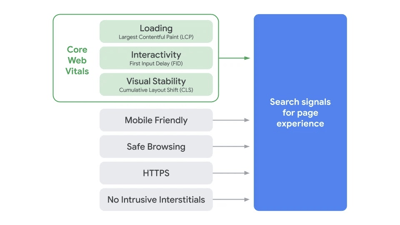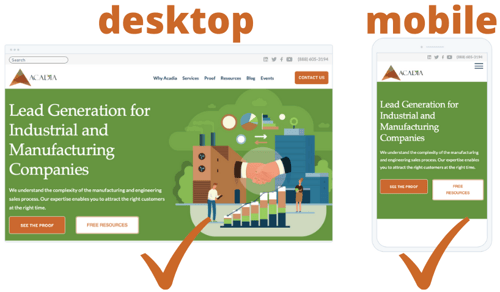Manufacturers: How to satisfy the May 2021 Google algorithm update
User experience (UX) is a focal point of the May 2021 Google search algorithm rollout. We read through the updates and picked out the ones that are pertinent to you (so you don't have to). Read below for tips on satisfying the five key areas of the May 2021 Google Algorithm: Core Web Vitals, mobile friendliness, safe browsing, HTTPS, and intrusive interstitials.
User experience (UX), according to HubSpot, "focuses on the end user’s overall experience, including their perceptions, emotions, and responses to a company’s product, system, or service. UX is defined by criteria including: ease of use, accessibility, and convenience. The concept of UX is most often talked about in terms of tech, such as smartphones, computers, software, and websites." (HubSpot 2021)
Even manufacturers like you need to think about what type of experience you're giving your website visitors. You want them to feel delighted, pleased, and satisfied when they use your website, not the opposite. How frustrating is visiting a supplier's website to place an order, yet you can't find the order portal because of poor website design? That's an unpleasant user experience.
While intangible, the above matters to your website visitors - and now it matters to Google, too! There are five major areas to satisfy the May 2021 Google Algorithm: Core Web Vitals, mobile friendliness, safe browsing, HTTPS, no intrusive interstitials.
The first thing you need to rank with the new May 2021 algorithm is what Google calls Core Web Vitals (CWV). Core Web Vitals to Google are like health vitals to your doctor. They are signals that tell Google how healthy your website is - and Google likes healthy websites!

Image courtesy of Google
Core Web Vitals include:
The engineers, suppliers, and manufacturers that use your website have little time to spare at work. Improving the above elements on your website delights them, and Google! Use your site's Google Search Console report to determine the health of your Core Web Vitals.
According to The Boston Consulting Group/Google, 50 percent of B2B search queries are made on smartphones, and BCG expects that figure to grow to 70 percent by 2020. (BCG, 2017).
In order for your website to be mobile friendly, it needs to have fast load times, be helpful to searchers, have the same content as your desktop, and without serious web issues (broken links, redirect errors, etc.) like Acadia's home page.

Aim for your website to satisfy Google's mobile friendliness requirement if you want to rank higher in search results, regardless of whether or not you think your clients and potential clients are using their phones to interact with your website. Use Google's tool to see how mobile-friendly your site is.
Cybersecurity and data security are important in today's digital age. Google Safe Browsing provides security to digital visitors by showing them warnings for potentially dangerous websites or dangerous downloads. It also provides security to website owners by alerting you when your site's security has been compromised. Have your webmaster and web developer dive into API Documentation to check on your site's safe browsing status.
HTTPS-security is yet another layer of security for your visitors and satisfactory part of their user experience. Would you recommend unsafe travel/vacation destinations to others? No! Google's HTTPS-security feature is just like that. They're not going to recommend websites to you on the first page of search results if it's not safe for you to visit. Look for the little lock next to your site in your search bar and "https" to see if your site is already secure.

If you haven't started the HTTPS/secure site process yet, the transition is seamless and won't affect your current search rankings. First, you'll need to purchase a set of data files to encrypt your website referred to as an SSL Certificate. Then, your webmaster will use the files to encrypt your website and make it safe for visitors.
I'm sure you had the same thought as I did: what are intrusive interstitial guidelines? After working in sales and marketing for several years, this is the first time I've heard of "interstitial guidelines"! Let's break it down:

Cookie tracking notifications/agreements and small pop-ups in the corner of your screen that do not block website content are good to go! They satisfy the 2021 May Google Algorithm update because they are not intrusive to visitors.
Google created this algorithm to better serve searchers and funnel helpful content to them. Contact us to help you get started. Your goal should be to provide an unparalleled user experience (UX) for your visitors - not to outsmart Google! Rounding up this blog post, here's what you'll need:
Comments